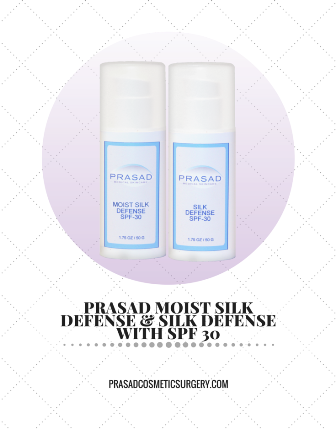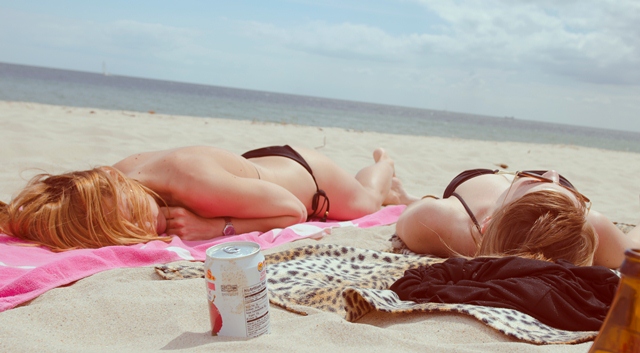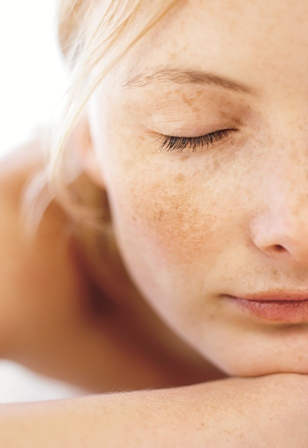With the summer season upon us, it’s easy to get caught up in getting that sun-kissed look. While many people know that prolonged exposure to the sun is ill-advised, it doesn’t stop many from lying in the sun for hours. Many perceive a golden tan as a look of vibrant health, and in some Western cultures is a status and beauty symbol (traveling from their cold country to a warmer one, having tanned skin is exotic to their naturally pale skin) so many choose to ignore the real dangers of sun damaged skin, and forgo the necessary precautions to protect themselves against sun damage and photoaging. Keep in mind that while you’re soaking up the sun, there could be a number of problems already developing in your skin.
The 2 Types of Damaging UV Rays
The ultraviolet radiation emitted by the sun penetrates into the earth’s atmosphere in three types of rays: UVA, UVB, and UVC. The UVC rays are the shortest type and are usually absorbed by the ozone layer before it can even reach us.
UVA, which is the longest of the three types, makes up about 95% of the UV radiation that reaches the Earth’s surface. What it lacks in intensity, when compared to UVB, it makes up with frequency. UVA rays are present in the atmosphere at equal strength during all daylight hours, throughout all the seasons, and can even penetrate through clouds and glass. UVA rays are also able to penetrate the deeper layers of the skin and are responsible for the tan that people get when they stay out in the sun too long, as well as many of the signs of photoaging. Even more worrisome, UVA has been linked to skin cancer, as it has been proven by past studies that UVA “damages skin cells called keratinocytes in the basal layer of the epidermis, where most skin cancers occur, and may even initiate the development of skin cancers.”
It is of vital importance that more people understand these things about UVA, as most tanning beds in tanning salons emit UVA light, in some cases even 12 times as much as that of the sun. According to skincancer.org, “people who use tanning salons are 2.5 times more likely to develop squamous cell carcinoma, and 1.5 times more likely to develop basal cell carcinoma. According to recent research, first exposure to tanning beds in youth increases melanoma risk by 75 percent.”
UVB, on the other hand, are shorter than UVA, and is mostly responsible for causing sunburns and redness, as it targets the outer layers of the skin more. Unlike UVA, the intensity of UVB rays vary greatly by time of day, season and location—in fact, it has been said that in the US, the hours between 10AM and 4PM from April to October yield the most UVB exposure. Keep in mind that reflective surfaces, such as snow or ice, can reflect these harmful rays right back at you so that you’re getting twice the dose of UVB.
What Happens When You Get Sunburned?
Everybody tans (or burns) differently—depending on factors such as the amount of melanin in their skin and how diligently they protect themselves from the sun.
An article by the Scientific American states that sunburns are not the same as typical thermal burns. In fact, according to Jeffrey M. Sobell, an assistant professor of Dermatology at the Tufts University School of Medicine, it isn’t the suns heat that burns skin—rather, that burn is actually a result of “an acute toxic reaction caused by exposure to the sun’s ultraviolet radiation.”
When the sun’s UV rays penetrate the skin, they damage the molecules and DNA in the skin and trigger a synthesis of different proteins and enzymes. This reaction under the skin causes the cutaneous blood vessels to dilate and inflammatory cells to collect in the area, thus producing that very familiar painful, red swelling and peeling that are typical of sunburn. This internal reaction usually takes about 4-6 hours to occur, which is why we only begin to see the effects of the sun on our skin long after we’ve been exposed to it.
While the body does have the capabilities to repair DNA from the damage caused by UV exposure, frequent exposure to the sun without protection will eventually cause irreparable damage, and perhaps even trigger the formation of skin cancer.
What is SPF?
SPF stands for sun protective factor which indicates the level of sun protection one can receive against UVB rays.
Melanin, the pigmentation of skin, is our body’s own natural source of protection against sun damage and has an SPF of about 1.5-2.0—in some cases, even going as high as about 4 SPF. These numbers mean that melanin is about 50-75% effective in protecting your skin by scattering UVB rays before it can cause a sunburn. It is common knowledge, however, that darker skin, which has more melanin, is more effective in protecting itself against harmful UV rays. To quote a portion from the study entitled “The Protective Role of Melanin Against UV Damage in the Human Skin” by Michaela Brenner and Vincent J. Hearing:
“Epidemiological data strongly support the photoprotective role of melanin as there exists an inverse correlation between skin pigmentation and the incidence of sun-induced skin cancers (1) and subjects with white skin are approximately 70 times more likely to develop skin cancer than subjects with black skin (67). Dark skin, which contains more eumelanin than fair skin is better protected against UV-induced damage, and eumelanin is thought to be superior to pheomelanin in its photoprotective properties.”
There are also quite a number of sunscreens available in the market, all possessing SPF levels that range from 15 to all the way up to 100. Interestingly, experts say that high sunscreen SPF levels may not necessarily make much of a significant difference in the bigger picture. According to Dr. Steven Q. Wang, Director of Dermatologic Surgery and Dermatology at the Memorial Sloan-Kettering Cancer Center:
“An SPF 15 sunscreen blocks 93 percent of UVB radiation, while an SPF 30 sunscreen blocks nearly 97 percent. First, above SPF 50 (which blocks an estimated 98 percent of UVB rays), the increase in UVB protection is minimal. Second, although UVA protection is also important (UVA not only accelerates skin aging, but contributes to and may even initiate skin cancers), SPFs mainly measure UVB protection. Individuals applying high-SPF sunscreens may not burn (UVB is the chief cause of sunburn), but without UVA-screening ingredients they can still receive large amounts of skin-damaging radiation.”
In addition to this, higher SPF levels may create a false sense of security in consumers, causing them to believe that their SPF 80 sunscreen is more than enough to shield them from the sun, and will thus forgo all other means of sun protection. This is a dangerous mentality to fall into. Keep in mind that regardless of the SPF level of your sunscreen, sunburn will likely occur with prolonged exposure, especially if you do not reapply every 1-2 hours.
Symptoms of Sun Damage
Prolonged and unprotected exposure to the sun can cause the following:
- General deterioration of skin quality (photoaging, wrinkles, age spots, freckles, liver spots, uneven skin tone, sallowness, etc.)
- Solar Elastosis – a degenerative condition that affects the elastic and collagen fibers in the dermis and leads to saggy skin.
- Telangiectasias – the appearance of small, dilated blood vessels near the surface of the skin, typically seen around the nose, cheeks and chin.
- Decreased immune functions of the skin, which can ultimately lead to cancerous and pre-cancerous lesions.
- Skin becomes thinner, thus making it more susceptible to bruising and tearing.
- Benign tumors and skin cancer.
Protecting Yourself from Sun Damage
To keep yourself safe from the irreversible damage caused by UV rays, keep the following pointers in mind:
- Avoid unnecessary and prolonged exposure to the sun. Always seek shade if possible.
- Use a broad spectrum sunscreen with an SPF of at least 30. This means that you’ll be getting protection not only from UVB, but UVA as well.
- Reapply your sunscreen generously every 2 hours—more frequently if you are sweating or swimming.
- Make sure you allot enough time for your skin to absorb the sunscreen, before you start any under-the-sun activities, to ensure better protection.
- Wear sunglasses with UV protection, as the sun’s radiation is known to cause cataracts.
- Do not frequent tanning beds. These machines are known to emit 12 times the amount of UV rays that the sun does.
- Choose cosmetics and skin care products that have SPF.

The Silk Defense and Moist Silk Defense line is a facial sunscreen with SPF 30. Both products contain microencapsulated Melanin, Vitamins C, E and ferulic acid ester for enhanced anti-oxidant protection against for UVB and UVA rays.
Our formula dries clear as a powder and leaves a silky, non-greasy, matte-finish. It also contains no chemicals or fragrances, which is ideal for most sensitive skin types. The Moist Silk Defense is formulated with more moisturizing capabilities, and is perfect for dry, dehydrated skin; while the Silk Defense variant works well on normal skin.
Stay happy and healthy this summer!


